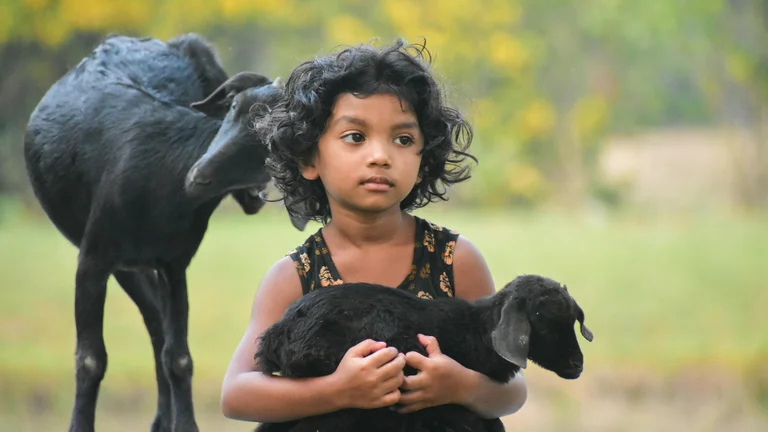The Role of Pets in Korean Dramas: More Than Just Background Characters

In Korean dramas, known to fans worldwide as K-Dramas, pets frequently transcend mere decorative roles. They act as pivotal narrative devices, emotional anchors, and character extensions. Over the years, these adorable animals, mostly dogs and cats, have captivated audiences with their natural charisma, spurring spikes in viewership and creating unforgettable moments that resonate beyond the screen. Their presence not only humanizes characters but also enriches storytelling, illustrating themes of loyalty, companionship, healing, and even comic relief. The affection and charm they exude often steal scenes, providing moments of levity and warmth that anchor otherwise complex plotlines.
K-Dramas often utilize pets to deepen emotional connections between characters or to reveal subtleties of their personal lives. For example, a dog’s unwavering loyalty might mirror a protagonist’s steadfast resolve, or a pet's playful antics might reveal a softer side to an otherwise stern character. The interplay between humans and pets in these dramas enables a nuanced storytelling approach, where non-verbal communication through animals adds layered meaning. This literary and cinematic technique is intentional and effectively taps into viewers' empathy, making pets indispensable to the overall drama experience.
Importantly, the attention devoted to pets in K-Dramas has sparked fan followings specific to these animals, with audiences discussing their favorite furry characters on social media and fan forums. Some pets have even garnered celebrity status, complete with their own fan accounts and merchandise. This phenomenon illustrates pets’ integral role in popular culture, extending K-Dramas' cultural influence and offering insights into the evolving narrative importance of non-human characters in entertainment media.
Iconic K-Drama Pets That Left an Indelible Mark
Various pets have defined and enhanced multiple celebrated K-Dramas through their defining roles. From the loyal dogs that support protagonists during their transformative journeys to the mischievous cats that inject humor and unexpected twists, these animals command attention and affection alike. Their distinct personalities and interactions provide context and subtext, complementing the human characters' story arcs in ways that script alone could not accomplish.
Among the most iconic K-Drama pets is a shaggy dog named Pong Dal who appeared in "My Lovely Sam Soon." Pong Dal’s expressive eyes and intuitive presence offered a comforting aura to the lead character, highlighting themes of healing post-heartbreak. Similarly, the clever cat Nabi from "Do Do Sol Sol La La Sol" showcased feline independence that mirrored the protagonist’s own quest for freedom and self-discovery. These memorable pets have elevated scenes from mere dialogue exchanges to deeply immersive emotional experiences.
A key attribute contributing to these pets' success onscreen is their ability to connect universally with audiences, regardless of culture or language. Their behavior—tail wagging, purring, playful interruptions—transcends verbal complexity, allowing viewers to relate directly through emotions. This makes pets in K-Dramas highly effective at conveying feelings and moods naturally and intuitively.
Additionally, some pets stand out because of their screen time prominence and narrative influence. For instance, the golden retriever named Boon Soon in "Strong Woman Do Bong Soon" functioned almost as a co-protagonist, engaging in pivotal plot moments, symbolizing protection and steadfastness. Meanwhile, the ferret appearing in "Weightlifting Fairy Kim Bok Joo" brought levity and innocence, blending seamlessly with the youthful and spirited tone of the series. Such integration highlights the deliberate choice of animal types that best fit the show’s thematic framework and target demographic.
How Pets Enhance Character Development and Storytelling Mechanics
When analyzing narrative structures in K-Dramas, pets often serve as psychological foils, relational catalysts, or sources of conflict resolution. Their activities and interactions create microcosms reflecting the broader interpersonal dynamics within the storyline. This bijection allows screenwriters to explore character nuances with subtlety and depth.
Character development gains additional layers when pets expose hidden traits. For example, a protagonist’s caring attitude toward their pet can reveal vulnerability, compassion, or resilience. Conversely, neglect or conflict involving pets might symbolize internal turmoil or relational strain. These dynamics provide viewers with visual and emotional cues, enhancing immersion without explicit exposition.
Moreover, pets facilitate storytelling mechanics through symbolic representation. Dogs often symbolize fidelity and protection, cats represent mystery and independence, while other animals like rabbits or birds might connote fragility or freedom. These archetypes assist in conveying thematic undertones consistently throughout the series.
On a practical production level, scenes involving pets can influence pacing and tone modulation. A quiet moment of pet-owner interaction might slow narrative tempo, emphasizing reflection or intimacy, whereas playful or disruptive pet behavior can inject spontaneous humor or tension breaks. This versatility contributes to richer storyboards and varied viewer engagements.
Table: Noteworthy K-Drama Pets and Their Narrative Roles
| Pet Name | Drama | Species | Narrative Role | Significance |
|---|---|---|---|---|
| Pong Dal | My Lovely Sam Soon | Dog (Mixed Breed) | Emotional Support | Symbolizes healing and companionship during personal loss |
| Nabi | Do Do Sol Sol La La Sol | Cat | Reflects protagonist’s independence | Represents freedom and self-discovery |
| Boon Soon | Strong Woman Do Bong Soon | Golden Retriever | Protective Companion | Embodies loyalty and courage alongside heroine |
| Snow | While You Were Sleeping | Dog (Pomeranian) | Comic Relief | Lightens intense plot moments |
| Dduk Dduk | Because This Is My First Life | Dog (Terrier Mix) | Relationship Catalyst | Bridges protagonists’ emotional barriers |
| Ferret (Unnamed) | Weightlifting Fairy Kim Bok Joo | Ferret | Symbol of Innocence | Supports youthful spirit of the show |
Popular Animal Breeds and Their Symbolic Meaning in K-Dramas
The recurring choice of certain animal breeds in K-Dramas is hardly incidental; each breed often carries culturally embedded symbolism or traits that align with the show's themes or characters’ personalities. This section elucidates how specific breeds enhance narrative impact and viewer empathy.
Golden Retrievers, frequently featured as dogs like Boon Soon, communicate warmth, openness, and dependability. These qualities suit dramas emphasizing friendship, protection, or love. Their affectionate nature makes emotional scenes resonate more powerfully.
Terrier mixes appearing as Dduk Dduk illustrate spiritedness and loyalty with a touch of stubbornness, mirroring conflicted yet endearing human characters. Their often agile movement and expressive faces allow versatile scene-setting, from dramatic to comedic.
Cats, such as Nabi and others, evoke mystery and autonomy. Korean cultural references often associate cats with subtle intuition and individualism, making them apt companions for protagonists undergoing personal quests or grappling with complex emotions.
A less common but increasingly observed pet is the ferret, characterized by curiosity and playfulness. Its inclusion signals freshness and innocence, often enhancing youthful storylines in coming-of-age dramas or light romantic comedies.
List: Key Reasons Why K-Drama Pets Captivate Audiences
- Emotional Connection: Pets evoke empathy and warmth, bridging character and audience feelings.
- Humor Injection: Their spontaneous antics break tension and refresh pacing.
- Symbolic Representation: Animals often metaphorically represent human traits and thematic elements.
- Character Development: Interactions with pets reveal hidden personality facets.
- Visual Appeal: The inherent cuteness increases screen engagement and memorability.
- Fan Engagement: Pets foster social media buzz and fan discussions, amplifying drama popularity.
The Behind-the-Scenes Challenges and Triumphs Working with Animal Actors
Incorporating pets into K-Drama productions presents unique challenges and opportunities. Animal actors require specialized care, trained handlers, and patience, considering that unpredictable behavior can impact shooting schedules and scene consistency. Directors and production teams must accommodate these factors with flexible planning and support systems.
Obtaining the desired performances from animal actors necessitates close collaboration between trainers and actors. Scenes often involve numerous takes, requiring persistence and adaptive techniques to capture authentic interactions without stressing the animals. For instance, ensuring a dog’s attention during emotionally charged scenes or a cat’s willingness to participate in complex shots is crucial for narrative integrity.
Successful integration of pets hinges on balancing natural animal behavior with script demands, often resulting in unexpected moments of spontaneity that enhance realism. Crew members frequently highlight these unplanned interactions as some of the most memorable moments in filming. Their genuine reactions also influence actors’ performances, fostering reciprocal authenticity.
Moreover, health and welfare regulations guide the ethical treatment of animal actors on set. Korean industry standards emphasize minimal stress and appropriate rest periods, which producers must strictly observe. These considerations sometimes impose logistical limitations but ensure humane treatment aligned with contemporary values.
Table: Production Considerations for K-Drama Pets
| Aspect | Challenges | Solutions | Impact on Production |
|---|---|---|---|
| Animal Training | Inconsistent behavior, limited attention span | Experienced trainers, positive reinforcement | Extended shooting schedules, increased cost |
| Scene Complexity | Unpredictability in multi-actor scenes | Pre-filming rehearsals, simplified setups | Reduced retakes, improved scene naturalness |
| Animal Welfare | Stress risk, health monitoring | Strict rest periods, veterinary supervision | Compliance with ethical standards |
| Actor Interaction | Need for chemistry, timing | Joint rehearsals, breaks for animals | Enhanced emotional depth on screen |
Exploring the Impact of Pets on K-Drama Marketing and Audience Engagement
The presence of beloved pets in K-Dramas amplifies marketing potential and audience interaction significantly. Pet scenes often become viral sensations, generating memes, fan art, and shareable content across platforms such as Twitter, Instagram, and YouTube. This organic buzz highlights pets as powerful marketing agents contributing to sustained show popularity.
Producers and broadcasters frequently capitalize on this phenomenon by featuring pets in promotional materials, posters, and behind-the-scenes segments. In several cases, pets have been included in merchandise lines, ranging from plush toys and keychains to apparel, catering to passionate fanbases who wish to immortalize their favorite furry co-stars.
Viewer polls and surveys demonstrate that pets increase audience affinity towards characters and narratives. Engagement metrics often spike during episodes showcasing pets, affirming their role in viewer retention strategies. The emotional bonds viewers form with these animals encourage repeat viewings and positive word-of-mouth dissemination.
From a content strategy standpoint, pets create natural opportunities for cross-promotion with pet care brands, animal welfare campaigns, and lifestyle endorsements. Strategic partnerships have emerged, leveraging the pets' popularity to raise awareness or drive product sales, illustrating pets’ economic and cultural weight in entertainment ecosystems.
List: Strategies Employed to Maximize Pet Engagement in K-Dramas
- Incorporating pets into pivotal emotional scenes to deepen viewer attachment.
- Utilizing pet-related humor to diversify drama tones and attract different demographics.
- Featuring pets prominently in teaser trailers and social media clips.
- Launching dedicated webisodes or short videos focusing on pets’ daily lives.
- Encouraging fan-created content by highlighting pets on official channels.
- Collaborating with pet influencers and veterinary experts for credible endorsements.
Case Study: The Phenomenon of "Strong Woman Do Bong Soon"’s Boon Soon
One quintessential example of a K-Drama pet stealing the spotlight is Boon Soon, the golden retriever featured in "Strong Woman Do Bong Soon." Boon Soon’s character not only served as a loyal companion but also became integral to the plot’s progression and emotional resonance.
Boon Soon’s screen presence was marked by expressive behavior, from comforting the protagonist in vulnerable moments to contributing to comedic sequences that balanced the drama’s intense themes. Critical and fan reception singled out the dog’s role as enriching the story beyond expectations, leading to substantial fan interest, including social media accounts dedicated to Boon Soon’s escapades.
Behind the scenes, trainers worked intensively to maintain Boon Soon's ability to perform diverse tasks ranging from simple obedience to reacting authentically under given story conditions. This professional effort ensured that Boon Soon appeared effortlessly natural, enhancing emotional authenticity.
The dog’s impact extended into marketing, where producers leveraged Boon Soon’s charm for promotional campaigns, live appearances, and merchandise sales. This confluence of narrative importance and commercial viability spotlights how pets transcend traditional supporting roles to become key brand assets in the competitive K-Drama industry.
Understanding Viewer Responses: Emotional and Psychological Dimensions
The reactions elicited by K-Drama pets extend beyond surface-level affection; they tap into deep-seated psychological and emotional triggers. For many viewers, these pets symbolize companionship in loneliness, unconditional love, and hope for healing—a universally relatable set of themes.
From a psychological perspective, animals on screen can stimulate oxytocin release, a hormone linked to bonding and stress relief. This physiological response boosts viewers’ emotional engagement with the content, helping explain pets’ powerful hold on fan interest. The portrayal of pets as vulnerable yet resilient taps into nurturing instincts, further amplifying empathy.
Psychologically, pets also fulfill narrative functions that resonate with attachment theory. Their unwavering presence offers stability in turbulent story arcs, making characters more approachable and humanizing. Viewers often project their own emotional experiences onto these interactions, deepening personal identification with the drama.
This dynamic also explains the popularity of fan communities formed around pet characters, where viewers share memories, discuss scenes, and create content celebrating these animals. Group membership around pets fosters social bonds among fans, generating additional layers of meaning and cultural value.
List: Ways K-Drama Pets Influence Viewer Experience
- Enhance empathy and emotional resonance with storylines.
- Provide comforting symbolism during emotionally intense plot moments.
- Serve as catalysts for character self-discovery and transformation.
- Contribute to pacing variation and tonal shifts for viewer engagement.
- Stimulate community formation among fans through shared affection.
The Future of Pets in K-Dramas: Trends and Predictions
As K-Dramas continue evolving across formats and platforms, pets’ roles are anticipated to expand with increasing complexity and creativity. Emerging trends suggest more significant narrative integration, including pets as main characters with distinct arcs and enhanced digital presence through augmented reality or interactive storytelling.
Production techniques will likely incorporate advanced animal training technologies and CGI enhancements to broaden possibilities without compromising authenticity. This balance will allow for more ambitious scenes featuring pets while maintaining the genuine behaviors audiences cherish.
Moreover, the diversification of pet species featured will reflect broader cultural inclusivity and storytelling innovation. Beyond dogs and cats, expect more exotic or symbolic animals appearing, each contributing uniquely to thematic exploration. This diversification can also mirror global shifts in pet popularity and awareness of animal welfare.
From a marketing perspective, pets will become increasingly central in multimedia strategies, including virtual meetups, live cams, and interactive fan events. Such initiatives will deepen audience immersion and expand engagement beyond passive viewing, aligning with contemporary media consumption trends.
Table: Anticipated Developments in K-Drama Pet Roles
| Aspect | Current Status | Predicted Future Trend |
|---|---|---|
| Narrative Integration | Supporting roles, emotional anchors | Lead roles, complex character arcs |
| Technical Execution | Live animal actors, practical effects | Hybrid of live action and CGI |
| Species Diversity | Primarily dogs and cats | Inclusion of exotic and symbolic animals |
| Marketing & Engagement | Merchandise and social media buzz | Interactive and immersive fan experiences |
Step-by-Step Guide: How to Recognize and Appreciate Pet Contributions in K-Dramas
To cultivate a deeper appreciation of pets’ roles in K-Dramas, viewers can follow practical guidelines that enhance observation and emotional connection.
- Observe Behavioral Nuances: Pay attention to how pets react to character emotions and situations; subtle gestures often carry narrative weight.
- Analyze Symbolism: Reflect on what the pets might represent thematically within the story—loyalty, independence, or hope.
- Note Screen Time and Interaction: Identify scenes where pets influence plot progression or character decision-making.
- Explore Behind-the-Scenes Content: Seek out interviews or making-of videos to understand training efforts and animal welfare practices.
- Engage with Fan Communities: Participate in discussions and shared content to expand perspectives on pets’ impact.
- Consider Cultural Context: Research cultural meanings ascribed to certain animals within Korean society to deepen contextual understanding.
This methodical approach allows for a richer viewing experience and fosters an informed appreciation of the multidimensional roles pets play in shaping memorable K-Drama narratives.
FAQ - Adorable K-Drama Pets That Stole the Spotlight
Which pets are most commonly featured in K-Dramas?
Dogs and cats are the most frequently featured pets in K-Dramas, often representing traits like loyalty, companionship, independence, and emotional warmth. Other animals like ferrets also appear occasionally to signify innocence or playfulness.
How do pets enhance the storytelling in K-Dramas?
Pets contribute to emotional depth, character development, and thematic symbolism. They offer non-verbal cues that reveal hidden traits, break tension with humor, and serve as metaphors for human experiences, enriching both plot and character arcs.
Are the animals featured on K-Drama sets trained professionals?
Yes, animal actors in K-Dramas are typically trained by experienced handlers to ensure appropriate behavior on set. Production teams prioritize their welfare and use positive reinforcement to secure authentic yet stress-free performances.
Can pets in K-Dramas influence viewer engagement and marketing?
Absolutely. Pets often generate viral content, become central to promotional campaigns, and inspire merchandise. Their appeal boosts viewer attachment and fosters social media discussions that elevate the drama’s popularity.
What challenges do producers face when working with pets on K-Drama shoots?
Filming with pets requires managing inconsistent behavior, maintaining animal welfare, coordinating with actors, and adapting shooting schedules to accommodate training needs and rest periods, ensuring both ethical treatment and narrative quality.
Will the role of pets in K-Dramas change in the future?
Emerging trends suggest that pets will gain more complex narrative roles, greater species diversity, and enhanced presence through technology such as CGI and interactive media, making them increasingly integral to K-Drama storytelling.
Adorable pets in K-Dramas play vital roles beyond companionship, enhancing storytelling through emotional support, character development, and symbolic expression. These animals often steal scenes with genuine charm, contributing to viewer engagement and the cultural impact of Korean dramas worldwide.
The presence of adorable pets in Korean dramas reflects a sophisticated storytelling tool that adds emotional layers, symbolism, and engagement. By transcending their simple roles as companions, these pets become co-protagonists in their own right, endearing characters and viewers alike. Their continued popularity suggests an evolving future where pets will play even deeper parts in narrative and cultural expressions within K-Dramas.






